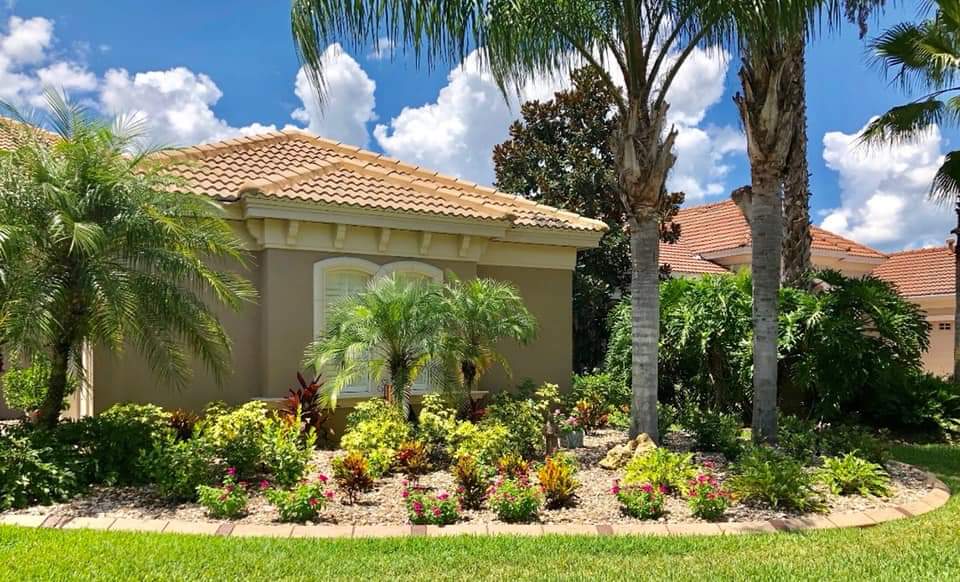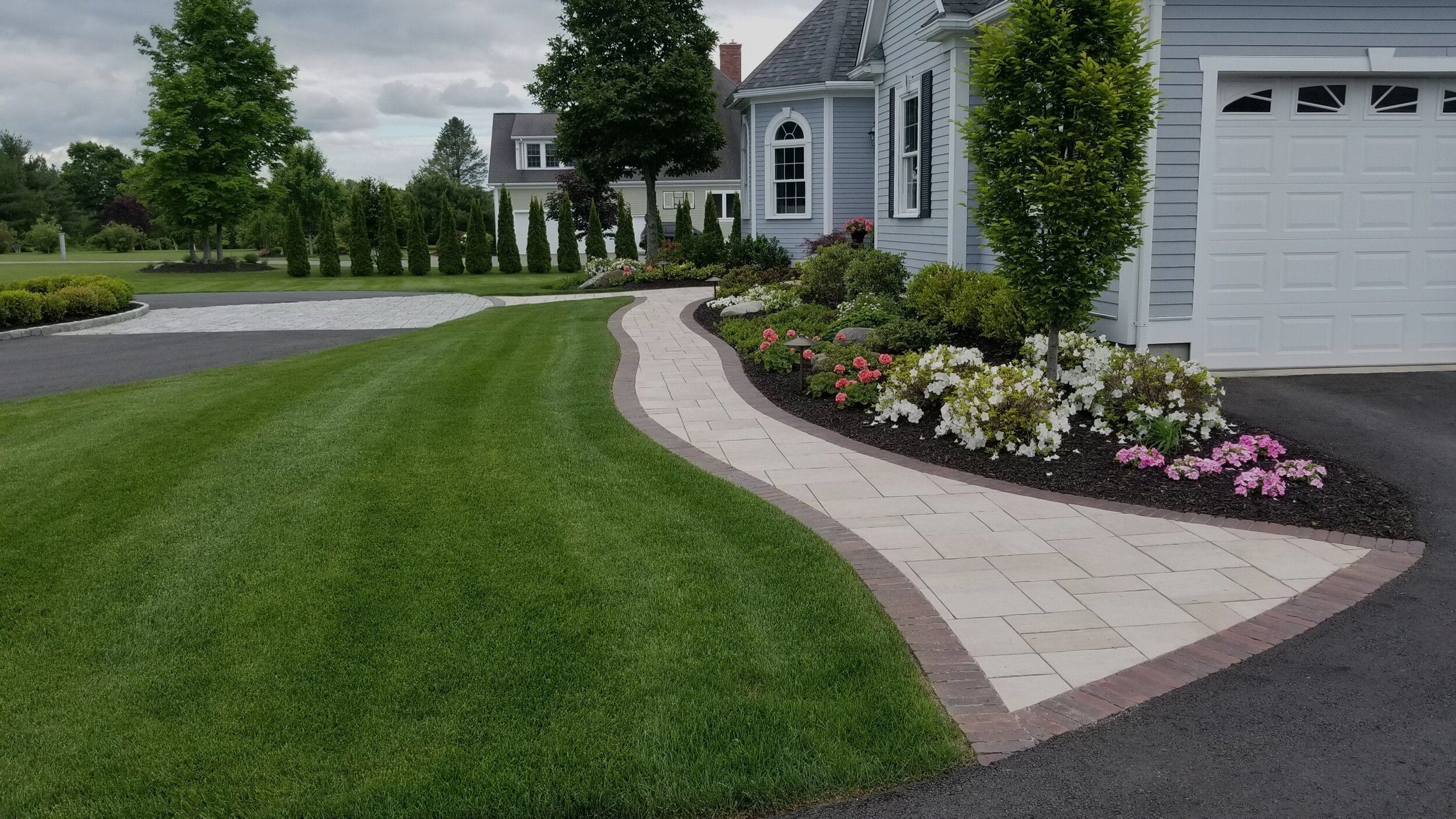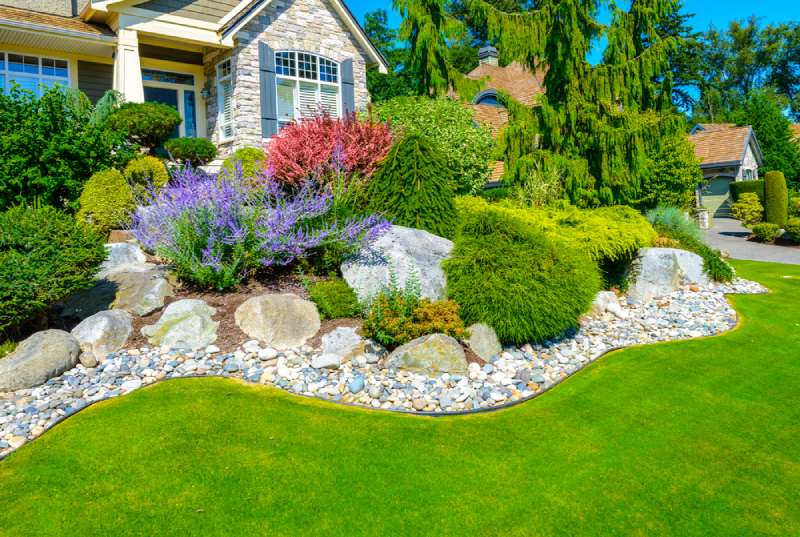Achieve Stunning Outcomes with Ingenious Palm Desert Landscaping Designs
Achieve Stunning Outcomes with Ingenious Palm Desert Landscaping Designs
Blog Article
A Comprehensive Guide to Creating and Implementing Effective Landscape Design Solutions
The art and science of landscape design prolong beyond simple aesthetic appeals; they entail a thoughtful combination of layout principles, ecological stewardship, and practical application. What strategies can one utilize to make certain these landscapes not only grow but likewise prosper in harmony with their surroundings?

Recognizing Landscape Style Principles
One could wonder what foundational components contribute to effective landscape layout. At its core, successful landscape layout pivots on several vital concepts that guide the setup and choice of elements within a room. These principles consist of unity, equilibrium, rhythm, and proportion, each serving to develop a harmonious exterior atmosphere.
Unity describes the cohesive relationship amongst various parts, making sure that they work with each other aesthetically and functionally. Balance can be accomplished via asymmetrical or balanced plans, allowing the landscape to really feel stable and welcoming. Proportion entails understanding the range of aspects in regard to each other and the surrounding atmosphere, advertising visual harmony and convenience.

Analyzing Your Outdoor Space
Before applying the principles of landscape design, a detailed assessment of your exterior room is crucial. This initial analysis helps define the range of your landscape design job and makes sure that your style lines up with the distinct attributes of your building. Begin by analyzing the measurements of your room, taking accurate measurements to comprehend the readily available location for numerous components such as pathways, yards, and patios.
Next, observe the existing attributes of your landscape, consisting of topography, soil quality, and water drainage patterns. These aspects substantially influence plant selection and placement. Furthermore, evaluate the sunlight exposure throughout various locations throughout the day, as this will certainly affect the types of plants that grow in your garden.
Consider the microclimates created by frameworks, trees, and other obstacles, as they can affect temperature and moisture levels. Take note of any kind of existing plants or hardscape components that you want to preserve or eliminate. This extensive evaluation lays the groundwork for a knowledgeable and reliable landscaping solution, guaranteeing that your design is not only aesthetically pleasing however sustainable and additionally practical for many years to come.
Sustainable Landscape Design Techniques
Incorporating lasting landscape design techniques is vital for creating an environmentally liable outdoor room. These practices not just promote eco-friendly balance however also improve the aesthetic and functional value of a landscape. One fundamental strategy is the application of indigenous plants, which require less water and maintenance while sustaining neighborhood wild animals. Implementing efficient irrigation systems, such as drip watering, decreases water waste and makes certain that plants receive ample moisture.

One more effective method is the tactical positioning of hedges and trees to provide natural windbreaks and color, thus decreasing power costs (Palm Desert Landscaping). Rain gardens can be integrated into the landscape style to manage stormwater overflow properly, filtering system contaminants prior to they go into rivers
Choosing the Right Plant Kingdoms
Selecting the right plants for your landscape is crucial to achieving both aesthetic appeal and environmental consistency. The process starts with an understanding of your local climate, dirt problems, and the certain microenvironments within your landscape. Assessing aspects such as sunlight exposure, dampness levels, and existing plants will certainly assist you select plants that thrive in your unique setup.
Think about incorporating indigenous plants, as they are well-adapted to neighborhood problems, require much less maintenance, and support local wildlife. In addition, selecting a diverse variety of species can boost biodiversity while reducing the danger of condition and bug break outs. It is essential to examine the development habits, blooming durations, and seasonal colors of prospective plants to produce a natural and vibrant landscape.
Additionally, think regarding the meant usage of the space; for circumstances, if the location will experience high foot traffic, decide for resistant ground covers. By thoughtfully picking plants that line up with both your environmental requirements and visual objectives, you can develop a sustainable landscape that not just enhances your residential or commercial website here property but additionally contributes favorably to the bordering environment.

Implementation and Upkeep Approaches
When the appropriate plants have been selected for your landscape, the emphasis changes to site web efficient application and continuous upkeep strategies. Successful installation starts with proper site prep work, which includes dirt testing to figure out nutrient degrees and pH, complied with by amending the dirt as needed. Thoroughly prepare plants according to their development behaviors and light needs, making sure ample spacing to advertise healthy growth.
Irrigation is an important aspect of implementation. Establish a watering timetable that considers the details demands of each plant types, readjusting for seasonal changes. Making use of drip irrigation systems can enhance water efficiency and minimize runoff.
Maintenance strategies need to be carried out to make certain the longevity and vitality of your landscape. Routine tasks include weeding, mulching, and pruning to regulate development and stop condition. Fertilizing needs to be performed based upon dirt tests, providing the essential nutrients without over-fertilizing.
Checking for bugs and diseases is vital; early discovery can prevent considerable damage. Seasonal modifications to upkeep regimens, such as preparing and winterizing perennials for spring growth, will certainly guarantee that your landscape stays healthy and aesthetically appealing year-round.
Conclusion
Effective execution and ongoing maintenance find out this here even more make sure the longevity and vigor of landscapes. By incorporating these aspects, landscapes can be changed right into gorgeous, practical atmospheres that advertise biodiversity and contribute positively to area wellness.
One may question what fundamental aspects contribute to reliable landscape style. At its core, successful landscape design hinges on a number of crucial concepts that assist the arrangement and option of elements within a space.Selecting the right plants for your landscape is essential to achieving both visual allure and environmental consistency. It is necessary to review the development routines, growing periods, and seasonal shades of prospective plants to create a vibrant and cohesive landscape.
As soon as the ideal plants have been selected for your landscape, the emphasis changes to effective implementation and continuous maintenance approaches.
Report this page